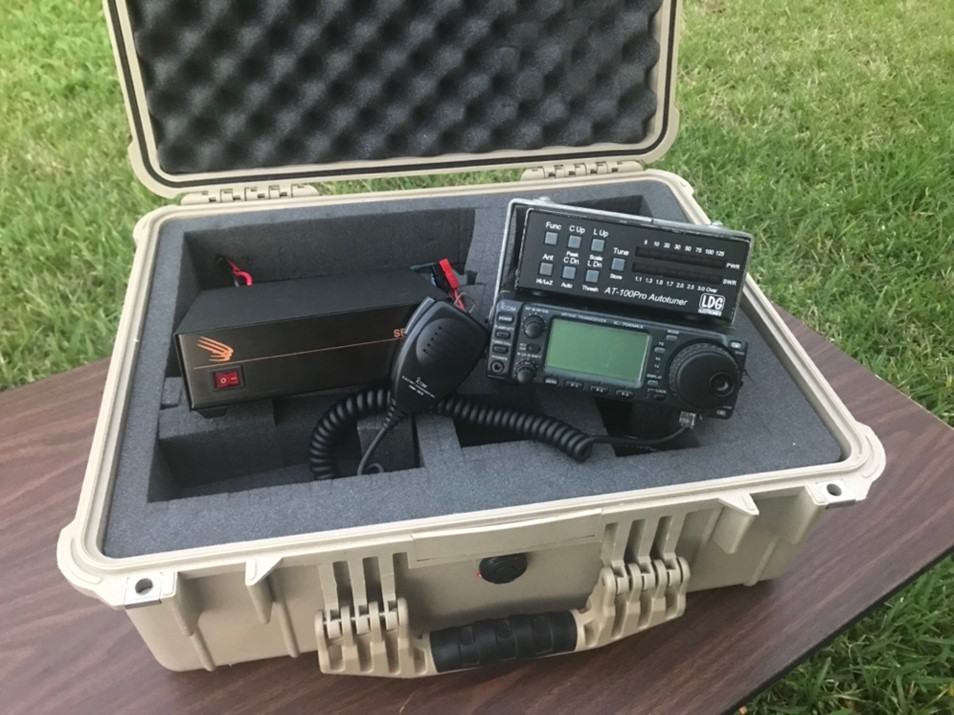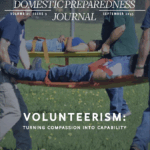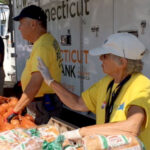As advocates for amateur radio and firm believers in the importance of emergency preparedness, it is critical to raise public awareness and promote active engagement in emergency preparedness through the lens of amateur radio. In today’s unpredictable world, individuals must have the knowledge and tools to handle emergencies effectively. Amateur radio is vital in connecting communities and providing essential communication during crises. By sharing practical tips, resources, and success stories, individuals can explore amateur radio as a rewarding and empowering avenue to contribute to national safety. Embracing amateur radio as a tool for communication and community support fosters a culture of resilience and preparedness to overcome future challenges.
Participating in amateur radio as a hobby, individuals contribute to a network of skilled communicators who serve as lifelines during emergencies. Operators undergo training and acquire expertise in emergency procedures, message handling, and operating under adverse conditions. Their ability to relay essential information, coordinate resources, and provide situational updates enhances the efficiency and effectiveness of emergency response operations. Moreover, the interconnectedness of amateur radio networks allows for collaboration and mutual assistance among operators locally, regionally, and globally, amplifying the impact of their collective efforts in times of need.
Recognition and enhancement of the value of the amateur service to the public as a voluntary noncommercial communication service, particularly with respect to providing emergency communications.
—Code of Federal Regulations Title 47 Chapter 1 Telecommunications Subchapter D Part §97.1a for Amateur Radio Service)
Emergency Operations Support
Various amateur radio emergency organizations exist to support public service and emergency communications, providing coordination and resources for operators involved in critical situations. These organizations work closely with local authorities, disaster response agencies, and volunteer groups to ensure effective communication during emergencies. Some of these organizations include:
- Amateur Radio Emergency Service (ARES) – ARES is operated by the Amateur Radio Relay League (ARRL) and consists of licensed amateur radio operators who volunteer their qualifications and equipment for communication duty in the public service during disasters. ARES operates at the county, state, and national levels.
- American Red Cross (ARC) – The ARC collaborates with amateur radio operators to assist in disaster and emergency response. Many local ARC chapters have amateur radio teams; using amateur radio provides flexibility and a wider communication range.
- Community Emergency Response Teams (CERT) – CERT members are part of local emergency management teams trained to respond to emergencies. While not all CERT groups use radio communications, some utilize amateur radio operators and networks to support their operations.
- Radio Amateur Civil Emergency Service (RACES) – RACES is an emergency communications service under the Federal Emergency Management Agency (FEMA). Licensed radio amateurs certified by a civil defense agency can communicate on amateur radio frequencies during drills, exercises, and emergencies.
- Radio Emergency Associated Citizens Teams (REACT) – Originally established in 1962 to monitor citizens band Channel 9 for emergency and motorist assistance calls, REACT teams have expanded their communication services to include citizens band (CB) radios, personal radio services, and amateur radio. Most REACT teams incorporate amateur radio operators into their operations in various capacities.
- Salvation Army Team Emergency Radio Network (SATERN) – SATERN is a volunteer organization of licensed amateur radio operators specializing in emergency communications and message handling. They dedicate their time and skills to support Salvation Army operations during local, regional, and international disasters. SATERN has local organizations in all 50 states of the United States, Canada, and various parts of the world.
- SKYWARN® – SKYWARN is a volunteer program with trained weather spotters who provide timely and accurate reports of severe weather to the National Weather Service. In some areas, amateur radio networks and repeaters relay weather observations to local emergency management and the National Weather Service.
- Local Amateur Radio Clubs – Apart from these fantastic organizations, amateur radio clubs’ robust local and regional networks also play a crucial role in providing public service and emergency communications. Some clubs actively support ARES and RACES operations in their respective areas, while others offer communication services for public events like parades, bike tours, and marathons. Major events like the New York and Boston Marathons rely on amateur radio operators to ensure smooth operations. Amateur radio enthusiasts often work behind the scenes at large-scale events.
Filling the Communication Gap
The rules and regulations governing amateur radio highlight its objective to provide voluntary noncommercial communication services, particularly during emergencies. Amateur radio operators take emergency preparedness responsibility seriously, assisting various organizations with public service and emergency communications. They provide real-time severe weather reports, aid in search and rescue missions, coordinate efforts during disasters, and support international aid groups in the aftermath of calamities.
Amateur radio fills communication gaps that often occur during emergencies when conventional systems fail or become overwhelmed. It is a reliable alternative when cellphone towers go down or in areas with limited coverage. Operators can establish ad-hoc networks, utilizing traditional voice communication and various digital modes to send emails and files.
A notable example of amateur radio’s effectiveness in emergencies is its response to Hurricane Maria in 2017. When the hurricane devastated Puerto Rico, causing power and communication failures, amateur radio operators from the mainland assisted the Red Cross in relief efforts. They provided crucial information, shared updates on infrastructure, and utilized digital communication systems to send messages and files, becoming a reliable communication lifeline.
For all intents and purposes, all communication in Puerto Rico was knocked out. Every single cell tower in Puerto Rico suffered some type of damage.… In those first days following Maria’s landfall, it was amateur radio that accomplished the mission when everything else failed because ham radio is so nimble. We could deploy an operator to a remote location with a radio, wire, and generator, and they would be operating within half an hour. As a result, we were the first communication organization that could establish two-way contact from any location on the island. We were the light infantry of communication, “holding” a position behind “enemy lines” until robust forms of communication came back online.
—Joe Bassett, W1WCN, ARRL “Force of Fifty” member who went to Puerto Rico to support recovery efforts (September 2017).
Technical Requirements
Amateur radio frequencies used in emergencies vary depending on the situation. High Frequency (HF) is used for long-distance communication. In contrast, Very High Frequency (VHF) and Ultra-High Frequency (UHF) are utilized for smaller areas and local networks like Skywarn, providing severe weather information. Gigahertz (GHz) frequencies may sometimes be necessary for high-speed data communications.
While a Technician Class license is sufficient for initial public service and emergency communications on VHF and UHF (shorter range) bands, upgrading to at least a General Class license is recommended to access HF (long range) frequencies. An Amateur Extra Class license offers additional benefits, including a deeper understanding of electronics and radio wave characteristics. Further information and resources can be found on the Amateur Radio Relay League (ARRL) website. There are study materials, practice exams, and a searchable database on where to find a class, study group, and testing locations within the United States. It can take less than a month to get a license at an average cost of $14 for the Federal Communications Commission (FCC) fee and an average of $15 for the local club volunteer examiner team. As of June 14, 2023, ARRL FCC License Counts show 761,155 amateur radio operators in the United States.
Personal Action Toward Community Preparedness – Get Involved Now!
It is not about which emergency preparedness organization one chooses to support, as all these organizations are engaged in critical work to bolster communities. What truly matters is taking the step to obtain an amateur radio license today, as it enables individuals to participate in training programs with any of these reputable organizations tomorrow. Doing so makes them valuable resources for themselves, their loved ones, and their communities when a crisis strikes unexpectedly. The license empowers them to lend a helping hand, provide vital communication services, and offer support in times of need. They should act now and make a difference when it matters most.
A great way to delve deeper into amateur radio and connect with fellow operators is to visit one of the numerous amateur radio clubs participating in the nationwide ARRL Field Day operations on June 24 and 25, 2023. This annual event provides a unique opportunity to witness firsthand how amateur radio works across various modes and serves as an excellent platform for promoting science, technology, engineering, and mathematics (STEM) education, particularly to the youth. By attending these events, individuals can engage in demonstrations, explore lesson plans catered to different age groups, and gain a comprehensive understanding of the diverse facets and opportunities offered within the amateur radio community.
What makes these gatherings truly remarkable is the emphasis on inclusivity and the whole family’s involvement. Amateur radio recognizes that each member has a valuable role in emergency preparedness. From young children learning about basic radio concepts to parents and grandparents honing their communication skills, there is a place for everyone at every age and ability to learn and grow. By actively participating in amateur radio activities, families strengthen their bonds and cultivate valuable skills and knowledge that can be instrumental during unforeseen emergencies. These events offer an incredible opportunity to witness the power of collaboration, work as a team, and understand how vital communication is in these types of situations as amateurs come together to showcase their expertise, share experiences, and inspire others to become a part of this fulfilling hobby and essential service.
Amateur radio operators empower themselves and their loved ones to overcome the challenges posed by disrupted infrastructure, overwhelmed networks, or limited access to traditional communication channels. Their amateur radio licenses provide a lifeline of communication that can bridge gaps and connect individuals, allowing for essential updates, assistance requests, and relief efforts coordination. It provides redundancy and ensures that important messages reach their intended recipients. During high-stress situations, knowing what to do, having clear guidelines, well-practiced routines, and designated roles enable quick decision-making and accurate information dissemination. With amateur radio, families can confidently navigate emergencies, knowing that they have the means to stay connected, informed, and in control.


Scott Roberts
Scott Roberts,KK4ECR,a dedicated amateur radio operator, obtained his license in 2011, driven by his desire to make a positive impact on the community. Joining the Clay County Amateur Radio Emergency Service (ClayARES), he actively contributes to various events. Recognizing his passion for emergency communication,hewas appointedassistant emergency coordinatorfor Clay County andsection manager for the Northern Florida Section of ARES. He hasdemonstratedhisexpertiseas a net control operator in the face of five hurricanes that have struck Florida, effectively directing amateur radio communications from the Emergency Operations Center.Hisvaluable connections with public officials in Clay County, Florida, reflect his commitment to fostering collaboration. Additionally, he has shared his knowledge and experience through published articles and a book dedicated to amateur radio.
- Scott Robertshttps://domesticpreparedness.com/author/scott-roberts

Desiree Baccus
Desiree Baccus, N3DEZ, is a dedicated emergency management professional with a passion for amateur radio. She plays vital roles in many amateur radio and emergency response groups, such as Community Emergency Response Team (CERT) and NASA Ames Research Center’s Disaster Assistance & Rescue Team (DART), showcasing her expertise and dedication to emergency communications. She also has served as the secretary and vice chair for the Colorado Federal Executive Board (CFEB) Emergency Preparedness Council (EPC), where she worked toward enhancing emergency response capabilities in her state. As a member of the Amateur Radio Relay League’s (ARRL) Public Relations Committee, she promotes amateur radio and its benefits to the public. Her previous roles include video production control coordinator and supply chain manager of IT warehouse safety officer at NASA Ames Research Center at Moffett Field, source evaluation board recorder at NASA Glenn Research Center, and administrative specialist for the Office of the Center Director at NASA Ames Research Center.
- Desiree Baccushttps://domesticpreparedness.com/author/desiree-baccus
- Desiree Baccushttps://domesticpreparedness.com/author/desiree-baccus
- Desiree Baccushttps://domesticpreparedness.com/author/desiree-baccus





